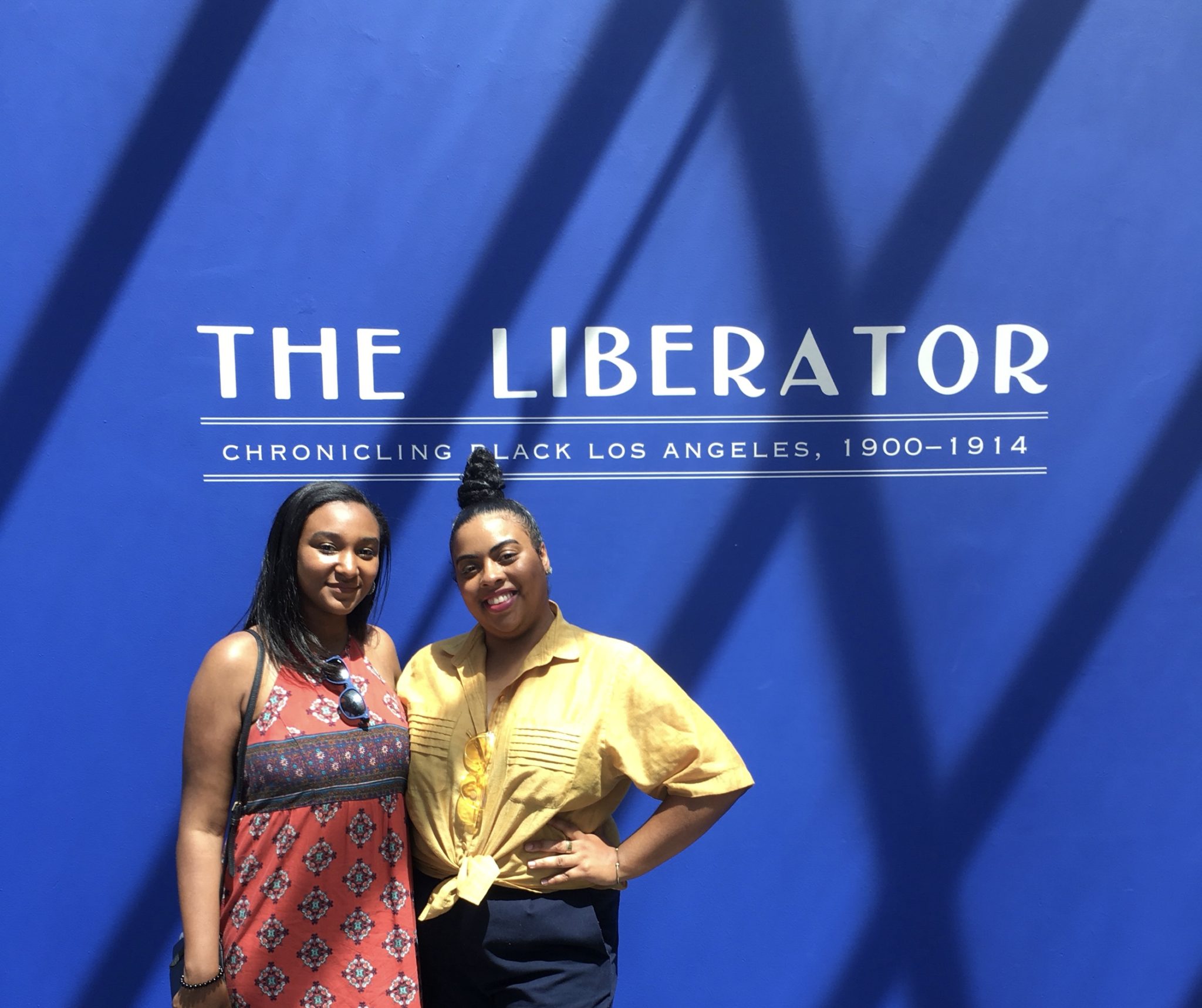Seeds From The Ancestors: Reclaiming Black Los Angeles at The CAAM
On the fourth day of the South LA Wellness Tour, I saw a new exhibit at the California African American Museum (CAAM) called The Liberator: Chronicling Black Los Angeles 1900 – 1914. I’m telling you after I saw this exhibit I couldn’t have been more proud to be born and raised in Los Angeles. The Liberator shares the life, work, and impact of journalist and activist Jefferson Lewis  Edmonds. He founded an innovative newspaper of the same title which largely encouraged Black Americans to move from the oppressive South to a city of opportunity. He was born into slavery and soon after the Emancipation Proclamation, he set his sights on liberation in Los Angeles, CA. His legacy continues through his family and now at the CAAM.
Edmonds. He founded an innovative newspaper of the same title which largely encouraged Black Americans to move from the oppressive South to a city of opportunity. He was born into slavery and soon after the Emancipation Proclamation, he set his sights on liberation in Los Angeles, CA. His legacy continues through his family and now at the CAAM.
As a young Black writer, I felt chills as I walked the exhibit and heard Edmonds’s great-great-great-granddaughter Arianne Edmonds lead the tour. (She was kind enough to take a picture with me afterward and answer all my curious questions). I felt taken aback by how this man could be so progressive right at the turn of the century. The subheading featured on every newspaper says “a weekly newspaper devoted to the cause of Good Government and the Advancement of the Afro-Americans.” If that isn’t punchy enough for you, articles in The Liberator advocated for women’s right to vote during the Suffrage Movement and highlighted successful local Black women like Bessie Bruington Burke who became the first Black principal in Los Angeles. Edmonds’s daughter, Susie Edmonds, was also the face of the newspaper at one point to share her accomplishments as an assistant editor of the newspaper and being an emerging journalist. The records are well kept, making it so easy to see how Black families and individuals were able to prosper after they uprooted themselves from the South.

Photo: Elon Schoenholz
Internally and through my prose, I’ve been searching for my roots in California. Trying to create a story about a post-slavery and post-Reconstruction world in this area where I stand now seemed so fuzzy and hard to decipher. But, this exhibit helps to contextualize our experiences and contributions in the West and the greater American fabric of history. I’m so grateful for Arianne and her family’s own  dedication to Edmond’s legacy of advancing Black people in Los Angeles. Edmonds himself bound volumes of The Liberator by year and they have been diligently passed down in the family for over 100 years! This helped the historians at the Los Angeles Public Library partner with Arianne on a digitization project of each volume and ultimately bring it to life at the CAAM. You can learn more about this project at jledmondsproject.com and view the digital archive at archive.org.
dedication to Edmond’s legacy of advancing Black people in Los Angeles. Edmonds himself bound volumes of The Liberator by year and they have been diligently passed down in the family for over 100 years! This helped the historians at the Los Angeles Public Library partner with Arianne on a digitization project of each volume and ultimately bring it to life at the CAAM. You can learn more about this project at jledmondsproject.com and view the digital archive at archive.org.
Arianne shared stories of her childhood as well, creating an atmosphere of whimsy and wonder. As a kid her uncle… would show her the volumes of bound newspapers and say “this will be important to you” one day. What caused her to pursue the J.L. Edmonds project, and even move back to L.A. as Arianne herself said she “just didn’t want Jefferson to be forgotten.” During the tour, Arianne was asked “what do you think J.L. Edmunds would want us to know?” She was delightfully taken aback by the sincerity of this question, saying “His greatest hope for us would be to know that we belong, we built this [country]. He would want us to take up space and exercise our rights.”
If we erase from American History the pages that the Negro’s presence cause to be written, it would be a short, uninteresting story.
― Jefferson Lewis Edmonds, 1909
What struck me the most was how J.L. Edmond’s was in his present actively thinking about the future. Ensuring a legacy was vital to him and that is something I will meditate on in my own life and hopefully you will too. To me, that is Afrofuturism: having the ability to dream and be innovative right where you are. So much of what the South LA Wellness Tour (more on this event soon!) was about connecting healing and mindful practices with ancestral knowledge. The Liberator: Chronicling Black Los Angeles 1900-1914 at CAAM was an immensely impactful gift from an ancestor and local hero.
If you don’t know, the CAAM is it is a free museum with incredible exhibits, events, and programs for the community. If you have the chance, I highly encourage you to take a walk around the space and see a slice of history that we have so often believed didn’t exist. The Liberator will be on view until September 8th.
Follow J.L. Edmonds Project: Twitter | Instagram | Facebook
Follow CAAM: Twitter | Instagram | Facebook
Follow Me: Twitter | Instagram | Facebook
Best,
Kai






